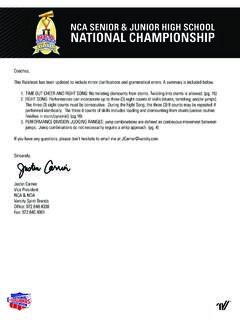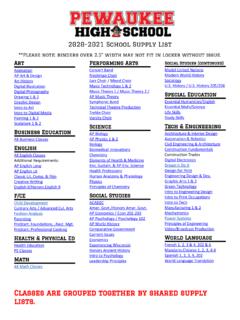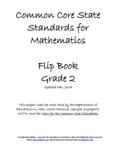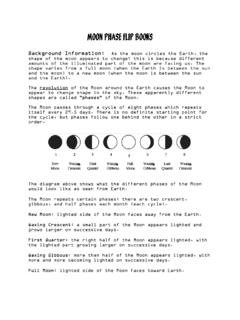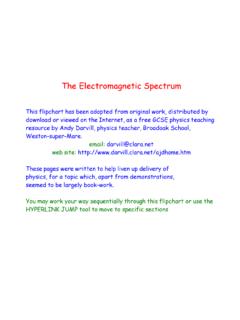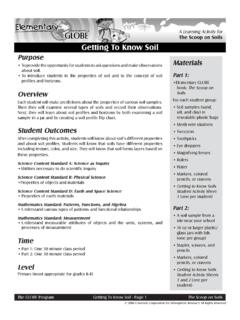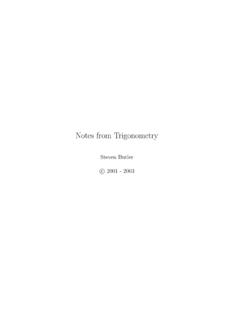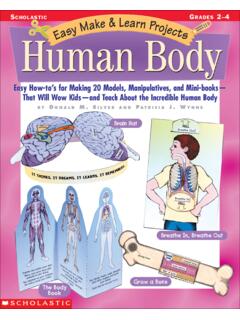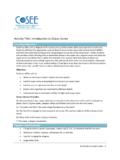Transcription of SCUSD Curriculum Map High School Mathematics Common …
1 SCUSD Curriculum Map high School Mathematics 1 1 Curriculum Map Common Core Mathematics : high School Math 1 Sacramento City Unified School District SCUSD Curriculum Map high School Mathematics 1 2 Table of Contents high School Math 1 Year-at-a-Glance ..3 Unit #1: Relationships Between Quantities ..4 Unit #2: Systems of Equations and Inequalities ..8 Unit #3: Connecting Algebra and Geometry Through Coordinates .. 11 Unit #4: Understanding and Analyzing Functions .. 13 Unit #5: Building Functions .. 19 Unit #6: Descriptive Statistics .. 22 Unit #7: Congruence and Constructions .. 26 SCUSD Curriculum Map high School Mathematics 1 3 high School Math 1 Year-at-a-Glance District Benchmark 1 Month Unit Content Standards September/October Unit #1 Relationships Between Quantities , 2, 3 , 2, 3, 4 , 3, October/November Unit #2 Systems of Equations and Inequalities , 6, 12 District Benchmark 2 November Unit #3 Connecting Algebra and Geometry Through Coordinates , 5, 7 December/January Unit #4 Understanding and Analyzing Functions , 11 , 3, 5 , 2, 3, 4, 5, 6, 7a, 7e, 9 February/March Unit #5 Building Functions , 2, 3 , 1c, 2 District Benchmark 3 March/April Unit #6 Descriptive Statistics , 2, 3, 5, 6.
2 7, 8, 9 May/June Unit #7 Congruence and Constructions , 2, 3, 4, 5, 6, 7, 8, 12, 13 CAASPP (Smarter Balanced Summative Test) SCUSD Curriculum Map high School Mathematics 1 4 Unit #1: Relationships Between Quantities (Approx. # Days - 22) Content Standards: ; , 2, 3; , 2, 3, 4; , 3, Math Common Core Content Standards: Conceptual Category: Algebra Domain: Seeing Structure in Expressions A-SSE Interpret the structure of expressions. [In Mathematics I, these standards address linear expressions and exponential expressions with integer exponents.] 1. Interpret expressions that represent a quantity in terms of its context. a. Interpret parts of an expression, such as terms, factors, and coefficients.
3 B. Interpret complicated expressions by viewing one or more of their parts as a single entity. For example, interpret P(1 + r)n as the product of P and a factor not depending on P. Conceptual Category: Number and Quantity Domain: Quantities N-Q Reason quantitatively and use units to solve problems. 1. Use units as a way to understand problems and to guide the solution of multi-step problems; choose and interpret units consistently in formulas; choose and interpret the scale and the origin in graphs and data displays. 2. Define appropriate quantities for the purpose of descriptive modeling. 3. Choose a level of accuracy appropriate to limitations on measurement when reporting quantities.
4 Conceptual Category: Algebra Domain: Creating Equations A-CED Create equations that describe numbers or relationships. [In Mathematics I, these standards address linear equations and exponential equations with integer inputs only. For , linear equations only.] 1. Create equations and inequalities in one variable including ones with absolute value and use them to solve problems. Include equations arising from linear and quadratic functions, and simple rational and exponential functions. [In Mathematics I, this standard addresses linear and exponential integer inputs] 2. Create equations in two or more variables to represent relationships between quantities; graph equations on coordinate axes with labels and scales.
5 [In Mathematics I, this standard addresses linear and exponential integer inputs] 3. Represent constraints by equations or inequalities, and by systems of equations and/or inequalities, and interpret solutions as viable or non-viable options in a modeling context. For example, represent inequalities describing nutritional and cost constraints on combinations of different foods. [In Mathematics I, this standard addresses linear integer inputs] 4. Rearrange formulas to highlight a quantity of interest, using the same reasoning as in solving equations. For example, rearrange Ohm s law V = IR to highlight resistance R. Domain: Reasoning with Equations and Inequalities A-REI SCUSD Curriculum Map high School Mathematics 1 5 Understand solving equations as a process of reasoning and explain the reasoning.
6 1. Explain each step in solving a simple equation as following from the equality of numbers asserted at the previous step, starting from the assumption that the original equation has a solution. Construct a viable argument to justify a solution method. Solve equations and inequalities in one variable. 3. Solve linear equations and inequalities in one variable, including equations with coefficients represented by letters. Solve one-variable equations and inequalities involving absolute value, graphing the solutions and interpreting them in context. (CA) Standards for Mathematical Practice: 1. Make Sense of Problems and Persevere in Solving Them 2.
7 Reason Abstractly and Quantitatively 3. Construct Viable Arguments and Critique the Reasoning of Others 4. Model with Mathematics 5. Use Appropriate Tools Strategically 6. Attend to Precision 7. Look For and Make Use of Structure 8. Look For and Express Regularity in Repeated Reasoning ELD Standards to Support Unit [Add text] SEL Competencies: [Add text] SCUSD Curriculum Map high School Mathematics 1 6 Essential Questions Suggested Assessments for Learning Sequence of Learning Outcomes Strategies for Teaching and Learning Differentiation (EL/SpEd/GATE) Resources What are the similarities and differences between a linear equation and an exponential equation?
8 What is absolute value? What are some real-life situations that require equations involving absolute value? What are some similarities and differences between the graphs of linear equations, linear inequalities, equations involving absolute value, and exponential equations? Why is it useful to interpret parts of an equation in relation to real-world context? When would you use a number line to graph a solution and when would you use a coordinate plane to graph a solution? What kinds of situations require you to use inequalities? What kinds of situations require you to use exponential equations? Assessments/Tasks aligned to learning experiences: For learning experiences 1-3: #task286 #task221 #task554 For learning experience 4: For learning experiences 5 6: For learning experiences 7 9: For learning experiences 10 11: Students will be able 1) Make sense of various parts of a given linear expression (such as its terms, factors, and coefficients) that models a real-life situation.
9 (Framework p. 18) 2) Create linear equations given a real-world context, and interpret parts of the equation (such as its terms, factors, and coefficients) in terms of the situation it models. 3) Explain each step in solving a simple linear equation in one variable and construct a viable argument to justify solutions. 4) Rearrange formulas to highlight a specific quantity, using the same reasoning as in solving equations. 5) Create inequalities in one variable, and interpret parts of the inequality in terms of the situation it models, with a focus on what the inequality symbol means in the context of the situation. 6) Solve one-variable inequalities (including absolute value inequalities) from real-world and mathematical problems.
10 Graph the solution on a number line and interpret the solution in terms of the context. 7) Create absolute value equations to represent real-world situations, and interpret parts of the equation in terms of the situation it models. 8) Understand the definition of absolute value from: | | { 9) Use the definition of absolute value to solve one-variable equations involving absolute value from real-world and mathematical problems. Graph the solution on a number line and interpret the solution in terms of the context. 10) Make sense of various parts of a given exponential Rational numbers: Because students have experience with rational numbers in previous grades, include within all experiences Solving linear equations: Google Doc This unit mostly focuses on linear equations; students will learn more about creating and graphing exponential equations and exponential functions as they continue through Unit 3 and Unit 4.}
